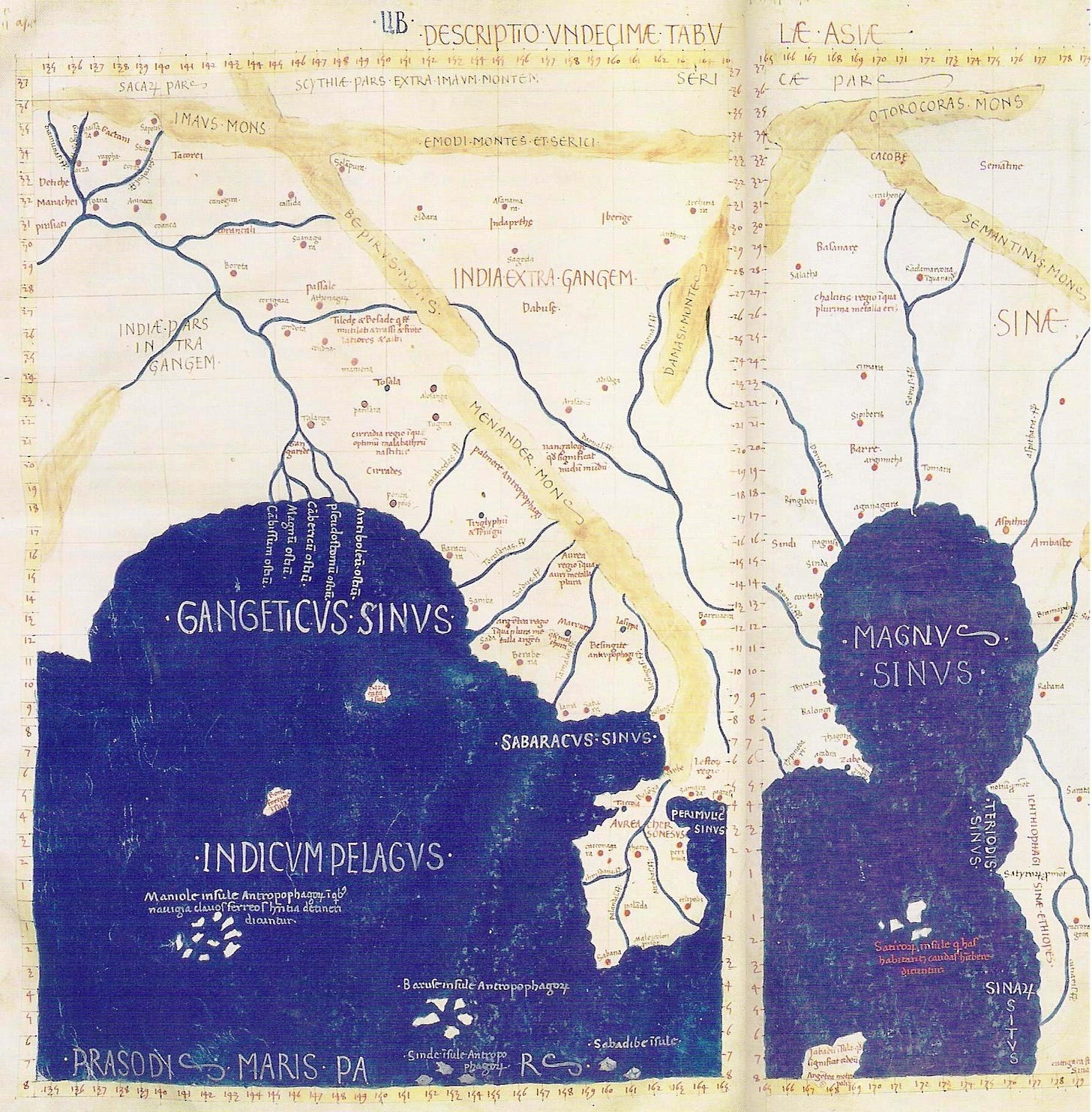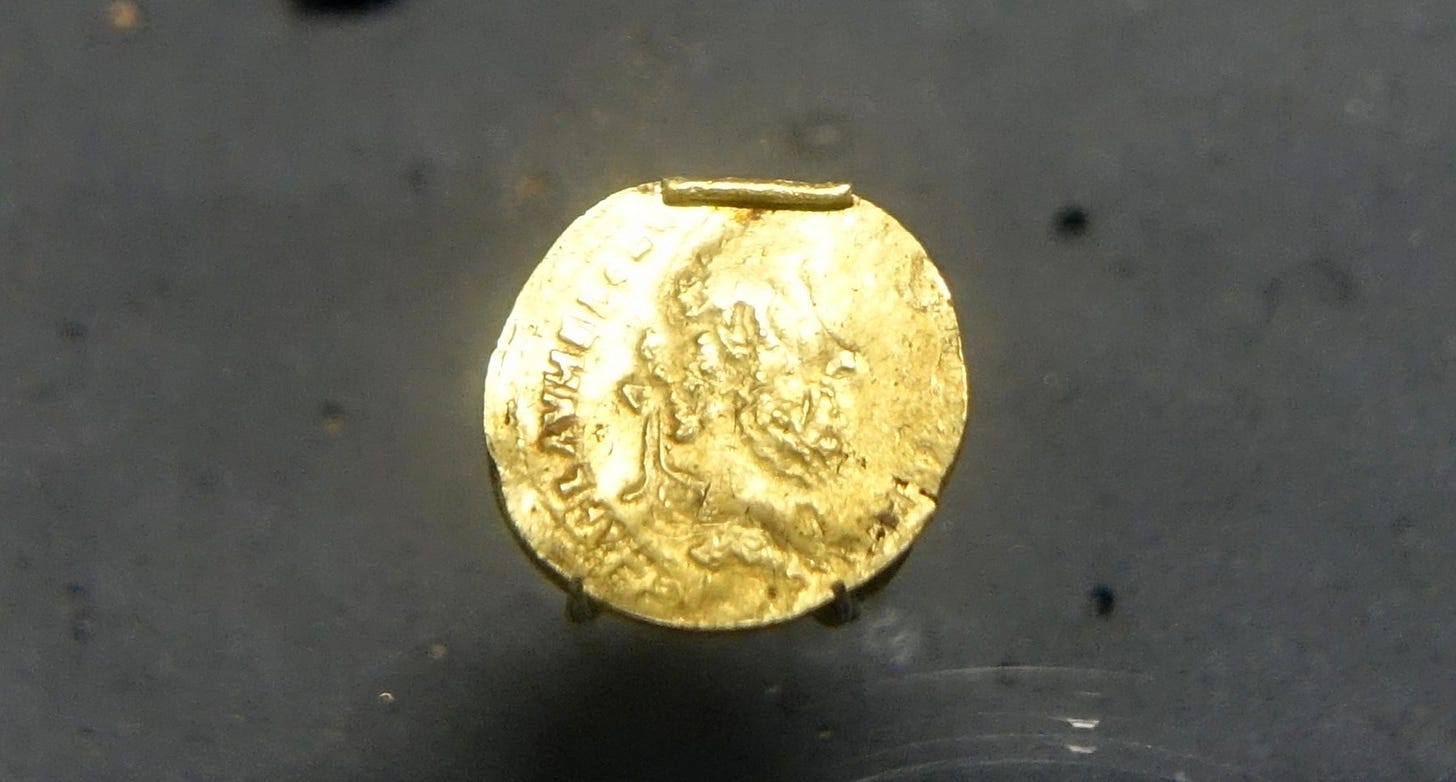As the publication date for The Far Edges of the Known World edges ever nearer, I am diving back into a lot of the original material for the book to prepare for podcasts and the like. It reminded me of one of the mind blowing moments I had when I realised just how connected the ancient world was! This artifact was a big part of that.
The ancient site of Oc Eo, located in the Mekong Delta of southern Vietnam, sits over 9,000km away from the city of Rome. The distance is so great that it comes as little surprise this thriving market town in south east Asia received very little attention in our surviving Roman evidence. So the discovery of a Roman medallion at Oc Eo (one of two uncovered), may comes as a surprise.
What is it doing there?
The Medallion
The gold medallion is only small but clearly shows the bearded face of an emperor. The Latin written around the edge identifies him as the renowned philosopher-emperor Marcus Aurelius, dating this artifact to the middle of the 2nd century CE.
On its own, this is a fun commodity. But it has been found alongside another medallion with a picture of Aurelius’ predecessor, Antoninus Pius, and a selection of jewelry, the style of which suggests that it was either made in the Mediterranean or was inspired by the styles we associate with that area.
Is it possible that Vietnam was part of the Roman trade network?
Written evidence
There is no clear term for southeast Asia in the Latin or Greek evidence we have. In fact, Greek and Roman writers were pretty poor at describing places far beyond their sphere of influence. They often grouped areas together under a name their readers were familiar with: Libya, for instance, denotes pretty much all of Africa that is not Egypt. Aethiopia was a region in Libya, somewhere to the South … but maybe not always? ‘India’ could also include Arabia, sometimes.
So, needless to say, when we are thinking about a land that was well beyond the edges of even the Roman empire, the terminology gets a bit fuzzy.
The 2nd century CE geographer Claudius Ptolemy describes a land far beyond India which he called Chryse Chersonesos, the Golden Peninsula. Scholars are pretty convinced that this refers to the Malay peninsula, beyond which was the Magnus Sinus (the Great Gulf). That would be the Gulf of Thailand.

Ptolemy then describes a town situated on the other side of the Gulf: the market town of Cattigara, near the mouth of the Cottaris river. Following Ptolemy’s guide and his estimated distances, a strong candidate for a large market town, to the far south east of the Gulf of Thailand, situated on a major river, would be the Vietnamese site of Oc Eo - exactly where these medallions were found.
Chinese Evidence
The role of Vietnam in the Roman trade network will always rely on a little speculation. Oc Eo is a good candidate for Ptolemy’s Cattigara, but it is not the only possibility. However, we can look away from Europe to find more corroboration.
Chroniclers of the Han court in China noted an absolutely tantalising event that gets no mention in the surviving evidence from Rome. In the year 166 CE, Roman envoys made contact with China:
In the ninth yanxi year [166 CE], during the reign of Emperor Huan, the king of Da Qin (the Roman Empire), Andun (Marcus Aurelius Antoninus), sent envoys from beyond the frontiers through Rinan, to offer elephant tusks, rhinoceros horn, and turtle shell. This was the very first time there was [direct] communication [between the two empires]. The tribute brought was neither precious nor rare, raising suspicion that the accounts [of the “envoys”] might be exaggerated.
This passage is important for a few of its details. Chief among them, this is one of the few examples we have of a foreign power giving its own thoughts and judgements on the Romans. This passage is part of a longer section in the Hou Hanshou (Book of the Later Han) which describes the eastern part of the Roman Empire and even comments on Roman customs.
Secondly, the chroniclers attach caution to this story because the gifts from Rome were so measly. Very unbecoming of a great empire. So much so, modern scholars who do consider this account to be accurate suppose that these were not envoys at all, but rather traders.
Thirdly, for our interests here, the Romans came through Rinan - a region which constitutes the central eastern coast of modern Vietnam.
So maybe it was not just trade goods that were traveling from Rome to south east Asia!




